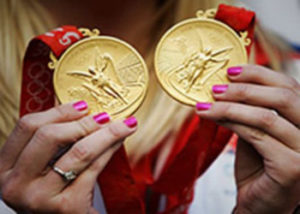As far as most people can remember, victors during the Olympic games have received medals in gold, silver, and bronze. These stand for the highest level of achievement among competitors of comparable strength and talent. However, such wasn’t always the case—here’s how it all started.


How Olympic Medals Came to Be
The ancient Olympic Games of the Greeks celebrated and honored the god Zeus through a series of athletic events joined by city-state representatives. It was always held in Olympia, a small town in Greece dedicated to Zeus, every four years. The prize was a wreath made of olive branches, crowned on the victor. In 1896, during the modern-day games in Athens, winners received silver medals and olive wreaths—back then, silver had more value than gold. Runners-up, on the other hand, received copper ones and laurel branches.
In 1904, the International Olympic Committee (IOC) assigned awards according to the well-known order of gold, silver, and bronze for the top three athletes during the games in St. Louis, MO. That time, the medals came with colored ribbons and were pinned to the athlete’s chest. They revamped the design and attached a laurel leaf chain to hang around victors’ necks during the 1960 Rome Olympic Games. Years later, colored ribbons became the standard in place of leaf chains.
What They’re Made Of
Olympic medals never followed strict guidelines regarding materials, design, and construction—as long as all these features are IOC-approved. IOC regulations state that gold medals should contain at least 92.5% silver and 6 grams of gold coating. Contrary to popular belief, all three levels of awards have a bit of copper in them.
There are instances when host countries add something unique, such as jade during the 2008 Beijing Olympics or small amounts of electronic-waste during the 2010 Vancouver Olympic Games. In the 1992 Albertville Winter Games, the medals had crystal adornments, while the 1996 Lillehammer ones contained a type of granite called sparagmite.

